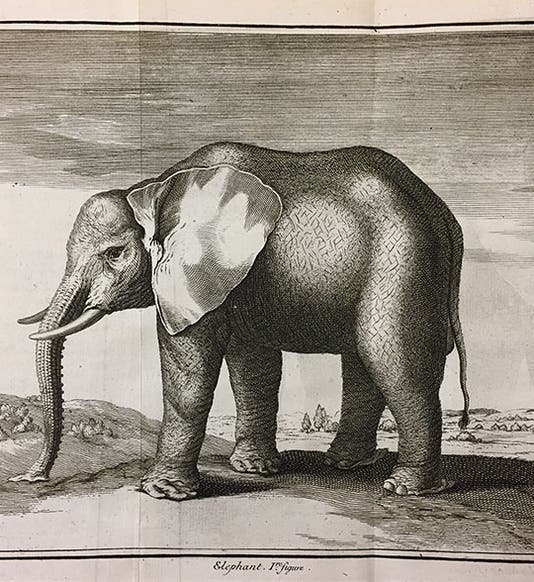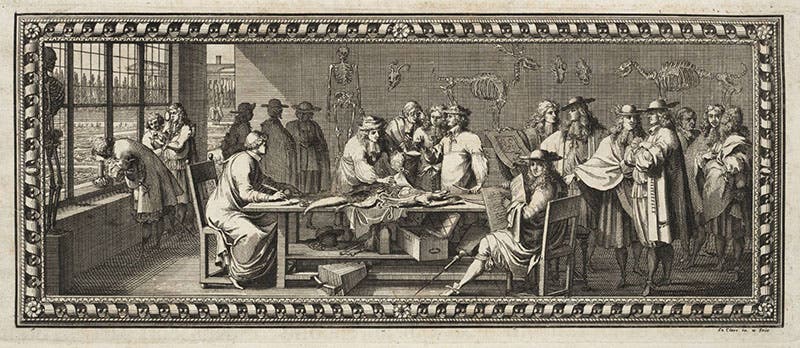Scientist of the Day - Joseph-Guichard Duverney
Joseph-Guichard Duverney, a French anatomist, was born Aug. 5, 1648. Duverney came to Paris as a young man and met Claude Perrault, who was then re-establishing comparative anatomy as a respectable discipline at the Royal Academy of Science. King Louis XIV had built a menagerie at Versailles, filled with exotic animals. You can see a contemporary engraving of the Versailles menagerie at the link. When the animals died, their remains were handed over to the Academy for dissection by Perrault and his informal group of anatomists. Observations were recorded in notes and in drawings. These anatomical endeavors would result in a splendid book, Mémoires pour servir à l'histoire naturelle des animaux (Memoires on the Natural History of Animals), published in 1676. Duverney joined Perrault's anatomists late, but he took an active role from about 1674 on, so some of the notes and images published in that book reflect Duverney's observations. We bought our copy of the Memoires in 1996 from British bookseller Roger Gaskell, as our one-millionth volume, and displayed it in our 2009 exhibition, The Grandeur of Life, as one of the grandest natural history books we have. We have also published a post on Claude Perrault that shows several more of the magnificent engravings by Sébastien Le Clerc that decorate that volume.
The dissections continued after the Memoires were published, and we know that Duverney took on a more active role. It is reported that in 1680 he dissected a rare black panther, and in 1681, he led the dissection of an elephant that had been in the menagerie for 13 years, a gift to Louis XIV from the King of Portugal. When it died at the age of 17, it was immediately hauled to the dissection rooms, where Duverney immersed himself quite literally in his work. Louis himself came to observe the proceedings, and when he could not find Duverney, called for his presence. Whereupon Duverney crawled out of the cadaver where he had been working and announced himself to his king. It was expected that Duverney would issue an additional volume of the Memoires, but he was notoriously reluctant to publish, and such a volume did not appear until 1733, compiled by others after his death. There we find an engraving of the elephant that he dissected (first image), and also one of the panther, although it is a spotted panther and not a black one, so perhaps something needs to be corrected in that part of the story.
In 1676, Duverney became professor of anatomy at the Jardin du Roi, the royal zoological and botanical garden, and there he began giving public dissections of both animal and human cadavers that became astonishingly popular public events. Being good looking, with considerable charm, and a penchant for interweaving natural philosophy with his demonstrations, Duverney became one of the most popular scientists in late-17th century France. The King even had to build a larger anatomy theater, with a capacity of 600, to accommodate the huge audiences that Duverney attracted. However, Duverney published only one book, on the anatomy of the ear (1683), and after his death in 1730, he quickly disappeared from public memory. In his day, however, he was king of the scalpel.
One of the headpieces of the Memoires of 1676 shows the academy anatomists at work (second image). Perrault sits on the chair to the right. Duverney is presumably there somewhere, but he has yet to be identified.
Dr. William B. Ashworth, Jr., Consultant for the History of Science, Linda Hall Library and Associate Professor emeritus, Department of History, University of Missouri-Kansas City. Comments or corrections are welcome; please direct to ashworthw@umkc.edu.







